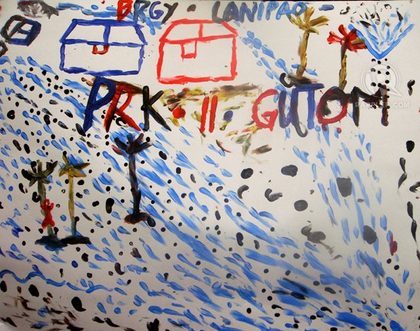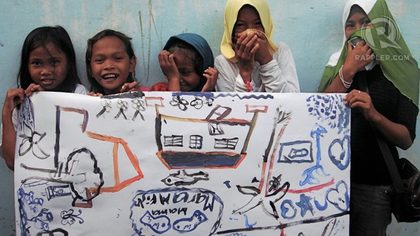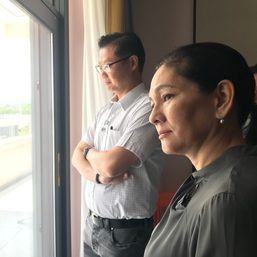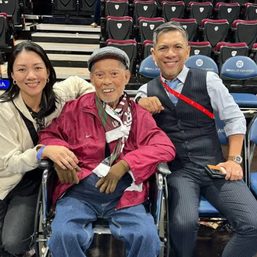SUMMARY
This is AI generated summarization, which may have errors. For context, always refer to the full article.
MANILA, Philippines – What do art and disaster have in common? Power.
I’ve come to realize how power is central to both. Art is defined as “works primarily appreciated for their beauty or emotions.” Meanwhile, disasters are forces of nature that take away beautiful things and beings. Both draw out the power of emotions.

A community hit by natural catastrophe is suddenly saturated by suffering brought about by the loss of very precious lives. It is difficult to place art in this grieving space. One can’t help but ask: what can art possibly do to help in the face of very real losses? The destruction is not just tangible. It settles in that quiet place inside those left behind that only their heartbeats can weigh.
I’ve come to know this. It takes little to become aware of the pain and fear children keep. Having the chance to go to Northern Mindanao and share art activities with rural children, women and IP communities from Bukidnon, Agusan, and most recently in Iligan city.
There is a place called Mandulog, which means the point where the two rivers meet, that lies on the foot of the hinterlands of Iligan. The Moro community calls Mandulog their home. There are 545 households living in the barangay, both from Maranao and visayan. 4,770 dependents were surprised and unprepared. On Dec 16, 2011, the two rivers swallowed nearly half of the community.

Houses were washed away. Trees were bowed down to their master.
The mosque was filled up with red mud. Men, women and children clung to coconut trees like sticks tacked on logs. The sun was sallow and sad.
This was how Salma, 13, Noralia, 8, and Raij, 12yo illustrated what they saw. The rain seemed like a vicious meteor shower. Sanira, 14, drew five human figures with their arms raised, crying for help. She never saw them again.
What they have seen, I can now only try to understand through paintings. About 75 children, aged between 5 – 16; and women 18 – 45 years old, shared the same sentiments. Stripped of words, they furiously illustrated the horrors they have experienced.
I thought most will be timid given what they’ve gone through. I was wrong.
The children took advantage of the creative endeavor, unleashing on paper their fears and frustrations. Looking at them absorbed in creating beauty from the destruction, I was reminded over and over the value of recreational time. How–in a few hours of play in a safe area, with paint, scraps, and games–the children found faith again.
The strangers–like me–become friends, protectors and defenders. This is the power of art.

As I watched the group of young girls and boys from the Moro people innocently draw lines, objects and symbols, notice that their strokes were certain. There was no of hesitation. Their voices were also steady and firm when I asked what they wanted. They gave simple answers.
“Sana ay kumpleto ang aming pamilya, buo at sama-sama kahit walang pera.”
“Sana po ay maaalagaan namin ang aming komunidad. Ang aming lupa, palay, hayop. Sana mapayaman namin ang lupa.”
“Sana ‘yung mga maykaya at makapangyarihan, kung ano man po ang plano nila sa kabundukan, ay ‘wag na po na nila putulin ang mga puno. Ang mga troso na lang po ang nakikita namin. Alagaan po natin ang kabundukan, kalikasan. Ito ay biyaya.”
A genius once said “look deep into nature, then you will understand everything better.”
The children from remote areas of Northern Mindanao have this exquisite knowledge. They already know what most are still trying to understand. And it takes a little to learn from them.
I went there to teach art but it was them who taught me. Their art was the combined power of nature and nurture.
They show us that the power of hope is not lost. – Rappler.com
Click on the links below for more.
Add a comment
How does this make you feel?





There are no comments yet. Add your comment to start the conversation.